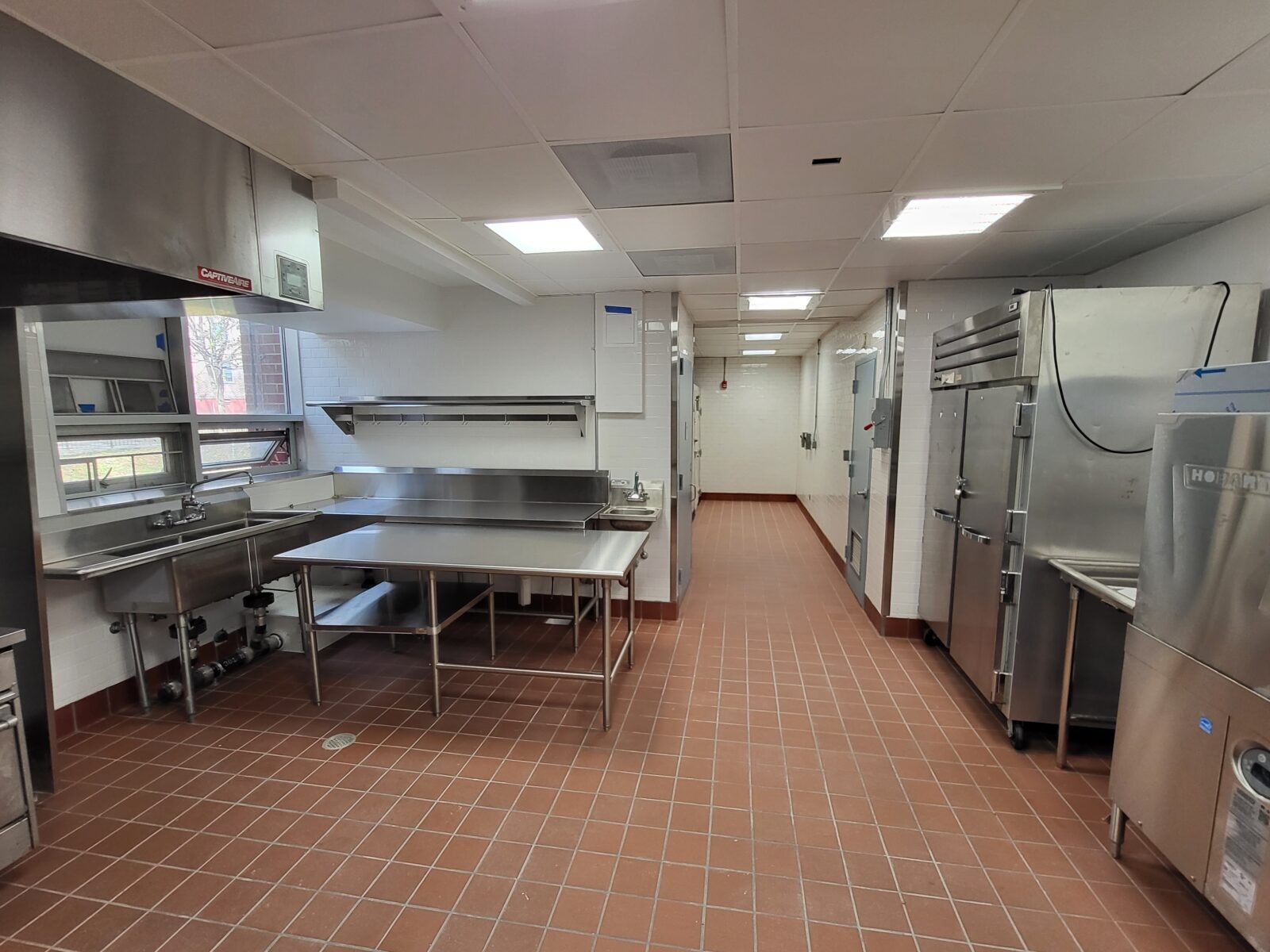Non-Residential Kitchens

Description
- Commercial cooking is a system consisting of commercial cooking equipment, exhaust hood, filters, exhaust duct system, fire suppression system and other related appurtenances designed to capture and contain grease-laden cooking vapors before exhaust the remaining heat and vapor safely to the outdoors.
Baseline
- Provide/replace existing kitchen equipment with code compliant mechanical ventilation. Work may include associated plumbing and electrical work.
- All new installations and proposed modifications / upgrades to existing commercial cooking fire extinguishing systems shall comply with the requirements of the 2022 New York City Fire Code, 2022 Building Code, and the referenced standards.
- The exhaust system shall include exhaust hood, exhaust fan, exhaust ductwork, and make up air unit.
- Appliances that generate smoke and grease (e.g. ovens, ranges, grills, griddles, deep fryers, etc.) should be provided with Type I exhaust hoods and an exhaust system.
- Type I exhaust hoods are not required for electric cooking appliances where an approved testing agency provides documentation that the appliance effluent contains 5 mg/m3 or less of grease when tested at an exhaust flow rate of 500 cfm. This exception is more likely to apply to a microwave than an electric oven and range.
- Type I exhaust hoods should be independent of all other mechanical exhaust systems.
- The fan serving a Type I exhaust hoods should have automatic controls that will activate the fan when the cooking equipment generating heat is turned on, or a means of interlock that will prevent operation of such appliances when the exhaust fan is not turned on.
- The protected area should include the area under the hood and over the cooking equipment, the area above or behind the filters and the opening of the hood into the branch duct.
- Appliances that do not generate grease or smoke (e.g. dishwashers, food warmers, steamers, kettles, pasta cookers, etc.) but produce heat or moisture shall be provided with Type II exhaust hoods.
- Under-counter-type commercial dishwashing machines do not require installation of a Type II hood.
- Commercial cooking exhaust systems shall be cleaned by FDNY certified companies at intervals in accordance with the NYC Fired Code.
- Make-up air should be supplied during the operation of commercial kitchen exhaust systems which are provided for commercial cooking appliances.
- Non-Residential Kitchens are to be equipped with both smoke detectors and heat detectors or ASA (Advanced Signal Analysis) neural fire detectors as required by NYC Fire Code.
- Where alarms are required to indicate the operation of automatic fire extinguishing systems, distinctive audible and visible alarms and warning signs shall be provided to warn of pending agent discharge per NYC Fire Code.
- Automatic fire-extinguishing systems shall be interlocked with fuel shutoffs, ventilation and makeup air controls, door closers, window shutters, smoke and heat vents and other features necessary for proper operation.
- The actuation of the fire suppression system shall automatically shut down the fuel or electrical power supply to the cooking equipment. The fuel and electrical supply reset shall be manual.
- Automatic fire-extinguishing systems shall be automatically actuated and provided with a manual means of actuation. A single system shall be designed to protect all hazards that could become involved.
- Where a fire alarm system is installed, automatic fire-extinguishing systems shall be monitored by the fire alarm system and such FA system shall be connected to central supervising station.
- A manual actuation device shall be located at or near egress from the cooking area.
- Each commercial kitchen shall be provided with one or more Class K portable fire extinguishers. Extinguishers shall be installed within 30′ of commercial cooking equipment.
- Where applicable, a rated, roll-down gate and associated controls shall be provided at the access opening between the kitchen and the adjacent dining area. The purpose of the roll down gate is to isolate the adjacent area from the kitchen area in case of fire condition in the kitchen area.
Strategies

Optimize Performance, Operation & Maintenance of Buildings, Systems & Assets

Ensure Accessibility & Inclusion
Community CentersCommercial KitchensEntryways
Last Updated on May 15, 2025 at 11:48 am

















